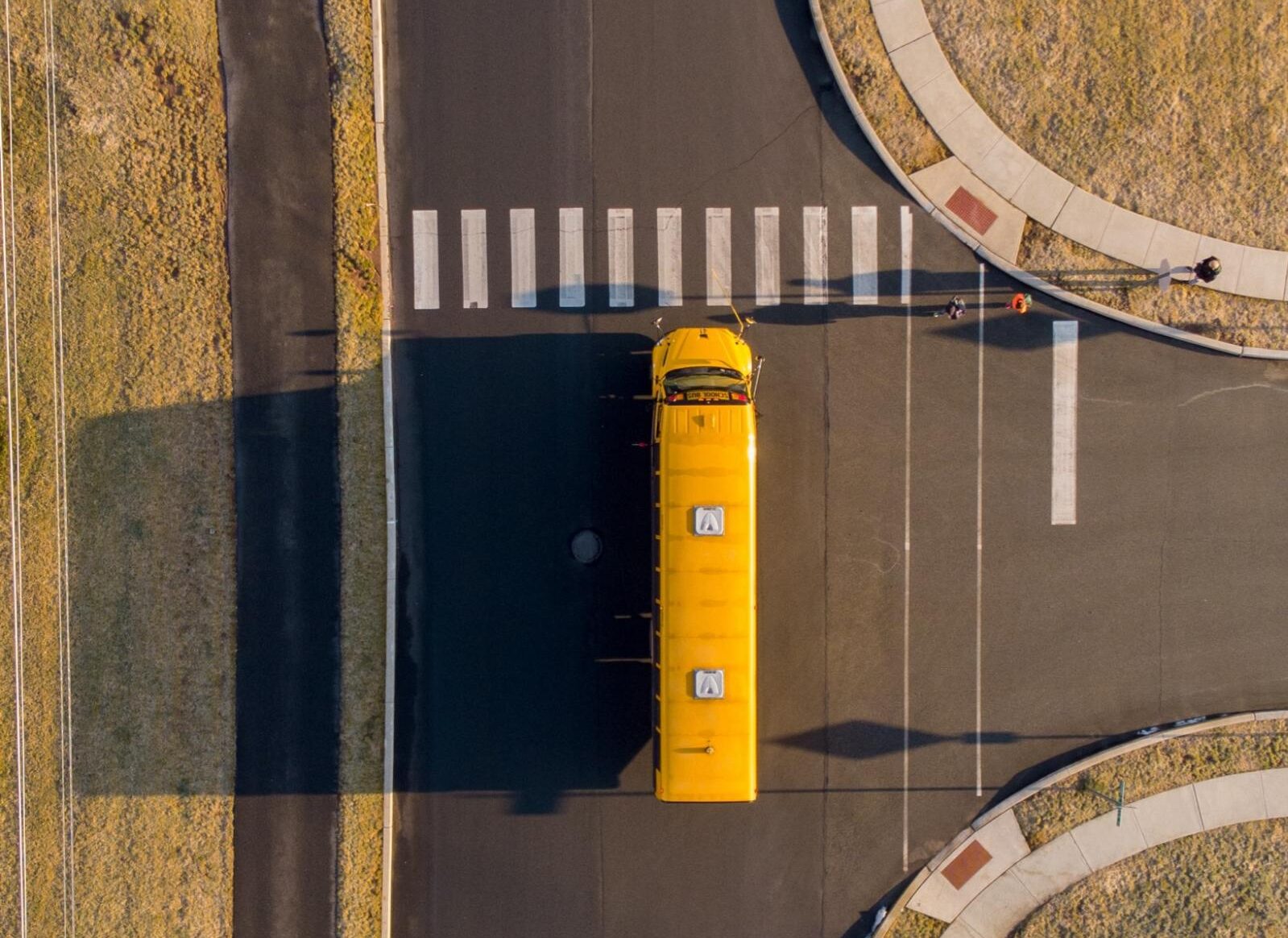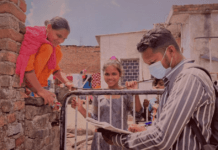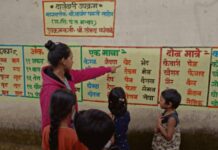Along with health adversities, COVID-19 magnified the socio-economic barriers to accessing education. Private schools catering to the upper socio-economic classes have been able to maintain a continuum of education during the pandemic, by largely relying on the online mode of teaching. In the face of the first wave, the Central and State Governments too launched various ed-tech based initiatives—such as the First Bell Scheme (Kerala) and DIKSHA (NCERT)—to bridge the learning gap.
However, for the 79 million students enrolled at Affordable Private Schools (APS)—also known as Low Fee Private Schools or Budget Private Schools—little or no effort has been made to keep the education continuum, either by the schools themselves, or the government.
The second wave of COVID-19 has infected more children: there is an increase in case numbers by 85-90% over the first wave, proving the child-child and adult-child transmission of the virus. Given these numbers, it is unlikely that schools—whether APS or otherwise—will reopen for in-person classes anytime soon.
In this light, we believe that focused policy reforms are essential to resurrect the quality of instruction at Affordable Private Schools—and, to ensure that education is dispensed in them in some form during the pandemic.
The Great Reverse Migration
Affordable Private Schools are loosely characterized as low-fee schools whose operations are not supported by government funds. “A majority of private schools in India are small-scale budget schools [or Affordable Private Schools],” says Deepak Pai, a Chartered Accountant and Financial Consultant specialised for the education sector. “They typically charge a low fee range of ₹10,000 to ₹30,000 per year.”
Thanks to these rates, APSs play a critical role in providing quality education (relative to government schools) at affordable costs to a vast majority of the middle or low-income families across the country. Typically, an affordable private school will primarily rely on school fees to sustain its functioning, which includes paying teachers’ salaries.
APSs were once becoming popular by the minute. In the past decade, there has been a growing migration of students from publicly-funded government schools to private schools—with new enrolments in private schools crossing 17 million between 2010-11 and 2015-16, and enrolments in government schools falling by 13 million in the same period. Although the motives for this shift are contested by scholars, it is largely based on the parental perception that private school students achieve better learning outcomes in comparison to public school students across different age groups.
With both governments and parents ignorant to the very real plights of affordable private schools, India risks losing a lot of the progress at the school level. 79 million children study in these schools. pic.twitter.com/CmV6m2eXfj
— Rohin Dharmakumar (@r0h1n) May 22, 2020
However, the financial hardships during the pandemic have rendered parents unable to pay school fees. “APSs are facing a major hit in revenue as their students’ parents are [usually from] lower income groups, and depend on their daily incomes for their day-to-day livelihood,” explains Pai. “Parents are usually employed in building construction, small businesses, housekeeping, security services, or in small offices, with a salary range of ₹8,000 to ₹20,000 per month. Most of these jobs are at stake due to the impacts of COVID-19—they are not able to pay their children’s school fees.”
And so, a reverse migration from private to public schools is underway. The 2020 ASER Report noted that from between 2018 to 2020, the number of boys enrolled in government schools increased from 62.8% to 66.4%. During the same period, government school enrolments for girls increased from 70% to 73%. Millions more have simply dropped out of the education system altogether.
As this happens, APSs lose more students, they come under severe financial distress, and their ability to provide quality online learning during a pandemic worsens.
For example, one argument suggests that APS do not have the resources to invest in online learning infrastructure. What’s worse is that their students are not able to afford the laptops or mobile phones required to attend these classes should they be held. To take online classes, teachers require extensive training and handholding to confidently migrate to online teaching—which cannot be easily done given the income crunch for APSs. “Turning to digital platforms for conducting online classes became a necessity, but we had no funds to pay for the subscription,” corroborates the Principal of an APS in Uttarakhand, who preferred to remain unnamed. “We had to work with the freely available features of the platforms. This was a major setback for both school and students.”
You may be wondering why this is the state of affairs if APSs charge fees throughout the year. However, as Pai clarifies, it is important to remember that unlike more elite private schools, “APSs are not running with huge cash surplus from their past operations. Whatever surplus they generate is reinvested in infrastructure, like benches, labs, classrooms, library, ICT boards, computers, sports equipment, and school vans etc.” As a result, “they do not have excess reserves to take care of their current operation costs, such as salaries, rent, and other day to day operation expenses. So, overall, COVID-19 has left the APSs finances in shambles.”
In the face of these challenges, APS could not adapt to completely leverage the advantages offered by the online schooling model and a majority of their children suffered without access to education.
Regression in learning and learning losses have been established as a significant outcome of the break in the continuum of education. In response, bridge learning initiatives for public school students like Karnataka’s Vidyagama program were extended to private schools across the state in December of last year. In a state witnessing learning losses and a surge of child marriages thanks to closed schools, this could have positive effects.
Karnataka High Court: Child Labour And Child Marriages Have Increased As Children Below 14 years Are Not Going To School In Rural Areas Of State.
Directs state to in ten days decide on recommencing the ‘Vidyagama’ Scheme to keep students engaged.— Mustafa Plumber (@plumbermushi) December 5, 2020
However, until this decision was taken, our experiences at Pacta indicate that many public schools were initially not even temporarily accommodating children from APS under their Vidyagama initiatives. Once again, students were left to suffer without access to any form of formal education. Even now, the exact reach and inclusiveness of private school Vidyagama arrangements are unknown and undocumented. With the second wave roaring ahead and lockdowns enforced across cities in Karnataka it is likely that these too have been discontinued.
The situation may be the same across the country, to the detriment of millions of children: and once again, APS students are disproportionately disadvantaged in this scenario.
Balancing Different Stakeholder Needs
The question that lies at the centre of these issues surrounding APSs is simple: how can the school’s on-going need to finance its operations be balanced against the child’s fundamental right to a continued education?
The pandemic has seen the adoption of different legal and policy measures to address this dichotomy.
During 2020, several High Courts across the country allowed petitions demanding a relaxation of school fees in private schools. A recent judgment by the Supreme Court also ordered around 36,000 private unaided schools in Rajasthan to grant a 15% deduction in annual school fee for unutilized facilities including “…recurring cost on various items such as petrol/diesel, electricity, maintenance cost, water charges, stationery charges, etc.” However, the same judgment also directed that no child must be debarred from attending online or physical classes or removed from the school due to non-payment of the fee or arrears.
Before this development, the Karnataka Education Department had already ordered a 30% reduction in tuition fees levied by schools and halted the practice of charging students for development or administrative fees. This was protested against by the school associations and teachers across the State. In Odisha, stakeholders have entered into an MoU (also endorsed by the Government in an order) for reduction of fees, albeit not without discontent among some relevant parties. Tamil Nadu allowed for a deferred collection of fees for schools taking online classes.
While such orders may have provided relief to parents suffering under the actions of profiteering private schools, they crippled the operations of APSs further. “Even though the school had started operating online, the salaries of teaching and non-teaching staff, and the costs of bus insurance, electricity, and water did not reduce,” says the APS Principal from Uttarakhand. “The government imposed restrictions on recovering fees from the students, with absolutely no support for the schools. This made the school’s survival difficult.” Pai elaborates on the consequences of such rulings. In his experience, “as their fee collection was badly impacted, employee morale in APSs and their public reputations also dipped.”
This seemingly discordant order from the Supreme Court points towards the complex balancing of issues which Courts have to deliberate upon: the complexity of the question and the layered nature of the problem does not allow a simple, single solution.
Instead, a combination of means is needed to address the financial constraints of APSs while ensuring that quality education continues. The state is yet to recognise this.
Lacking Government Support During the Pandemic
Since education provision is a public responsibility, and especially given the huge numbers APSs cater to, the government is duty bound to act to secure their functioning. In the absence of assistance, an unreasonable burden is due to fall on either students—and their future employability and incomes—or the school administration and teachers. “In this kind of a situation it is the government’s responsibility to build the financial capability of APSs,” argues Pai. “This can be done by providing interest-free loans, tax subsidies, free online teaching aids, provident fund and employee state insurance payment subsidies. Not charging APSs for electricity costs and building tax would also support them.”
However, the government has largely been oblivious to the distress of the APSs—and to measures such as those suggested by Pai.
Policy decisions have not accounted for the needs of the budget private schools yet. The ‘Prime Minister’s Citizen Assistance and Relief in Emergency Situations’ (PM Cares) website suggests that, in the year 2019-2020, ₹3,076.62 crore was donated to curb the impact of COVID-19 on Indian society. Educational institutions contributed a significant amount to PM Cares—reports state that by May of 2020, Central government-funded institutions and educational bodies had contributed around ₹39 crore to this fund. The current total amount donated to the fund remains unclear.
With the limited information available, no reports suggest that PM Cares funds were utilized for sustaining educational institutions hard hit by COVID-19—whether APSs or otherwise.
To aggravate the troubles of APSs further, there have been reports (although contested by state officials) of large pending reimbursements for private unaided schools who have admitted students from Economically Weaker Sections under the Right to Education Act, 2009. Moreover, schools have maintained that fee cuts—which are required by different States’ orders—are not reciprocated by a proportionate waiver of land revenue (or property tax), or lower interest on borrowings and so on.
The government has, thus, severely underperformed its duties with regards to supporting the continuum of education by budget private schools.
A Lack of Trust: Reviving the Not-for-profit Status of APSs
Many state-wise School Education Acts and Regulations across the country mandate that schools can be run only by a non-profit entity. This implies that only a Public Trust, Charitable Society, or Section 8 company (that is, private companies with charitable and non-profit objectives) may run a school in India.
Intrinsically, such philanthropic entities can raise donations from both public and institutional routes. The Income Tax Act, 1961 has provisions that allow such entities to exempt their income from taxability. Similarly, donations to charitable organisations can also be applied towards a donor’s tax deduction. Non-profit entities can also access grant funds from both domestic and international sources, as well as grants under corporate social responsibility (CSR) initiatives.
For instance, Teach For India recently received a 22 crore grant from the Michael and Susan Dell Foundation to support their e-learning efforts during COVID-19—the money will be used to purchase devices for over 15,000 students.
Just like NGOs that run educational initiatives, budget private schools too can take advantage of such funding opportunities.
For budget private schools to stay true to their unique character—of providing highly subsidized education—such alternative funding must be considered instead of simply relying on fee receipts for the schools’ functioning. Such actions would help establish their identity of actually providing affordable and quality education to the marginalized. Continuous narratives of the positive impacts of such schools will strengthen public faith in them and also invite further support by the government.
Historically however—other than schools directly run by religious or charitable endowment funds, like the missionaries or mutts—APSs have never sought philanthropic donations or accessed social capital. One of the biggest roadblocks in this funding route is the lack of faith and credibility in these institutions as being truly “charitable”.
The entire premise of private education is shrouded in perceptions of goondaism, corruption, and racqueting. Take for instance teacher qualifications—the Bachelors of Education degree is a legal prerequisite for employment as a teacher, and some schools even ‘sponsor’ teachers’ education too. However, very often these degrees are issued by teacher education institutions which are shams, fly-by night operators that issue phony certificates for a steep fee without any actual classes or infrastructure. What “education” then can such a teacher impart to their students, especially in distressing situations such as the pandemic?
Similarly, obtaining school recognition under respective State Education Acts often involves bribing the machinery to overlook expectations of building and playground sizes, and various other factors such as caps on school fees and RTE admissions. With all these hidden costs to meet, APSs are no longer the noble, charitable entities they set out to be, thereby, making the “non-profit” element of school education hard coded into the law nearly redundant. However, if this image should change, it would open up opportunities of philanthropic or governmental support to Affordable Private Schools—all of which they direly need.
Fresh Beginnings: The Need For External Support
COVID-19 can push APSs to come out of this caterpillar phase, recommit to their non-profit philosophy of education as an enterprise, and rid themselves of corrupt practices to regain the trust of the people.
Making active efforts to pay teachers regularly, reduce dependence on tuition fees, support children from economically weaker sections, and collaborate with non-governmental organizations to adapt to technology-enabled learning will help to establish the “non-profit” intent of Affordable Private Schools. Private-Public Partnerships may also be undertaken to bolster infrastructural advancements in such schools. Such steps would further help these schools participate in and benefit from philanthropic capital raising in the form of grants, CSR, and impact funding.
However, as long as the pandemic continues, reciprocal efforts would also be needed from the government to keep schools open.
Governmental support in the form of fast tracking income tax registrations and exemptions, providing low-cost loans (mimicking support extended to small and medium-sized enterprises), and granting waivers on land revenue (at least during the pandemic) would be crucial financial steps. When it comes to ensuring better quality, an outcome-based perspective for licensing schools would help ensure that certain parameters are met. Designing effective teacher qualification programs, which don’t have tacit workarounds, is also key. Greater emphasis on in-service teacher professional development also needs to be placed—as this lends to vested interest for those participating in learning, as well as for those facilitating/enabling such development.
The pandemic offers a unique window of opportunity to rethink old problems and their solutions. APSs have always been riddled by a vicious circle of catering to the economically marginalised, resulting in a lack of funds, finally precipitating poor teaching infrastructure and learning outcomes. By implementing some of these recommendations, it is possible to resurrect APSs and help them re-commit to a non-profit model that recognises education as a fundamental right.
Featured image courtesy of Timothy Allen via Unsplash.






